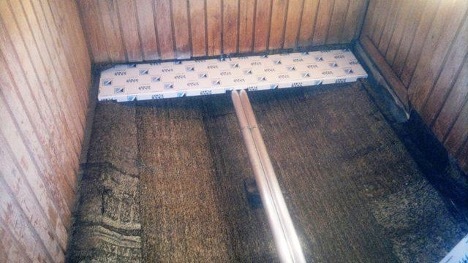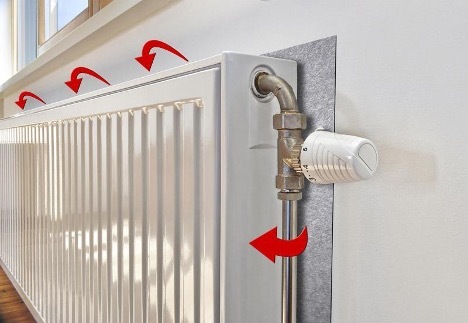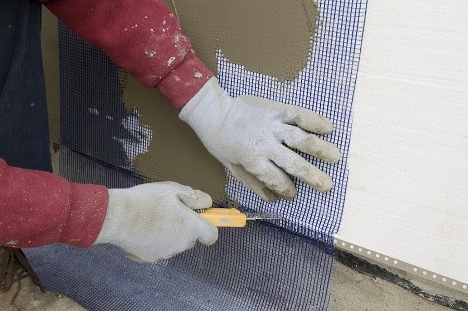Before you begin the wallpapering procedure, it is extremely important to ensure a perfectly level base. Aligning the walls with wallpaper is the first and one of the most important stages of repair. The quality of this work is directly affected by the choice of material with which the work will be carried out.
There are several methods that allow you to align walls with wallpaper. First of all, the walls are cleaned of old coating, dirt and degreased. After this, the degree of surface roughness is assessed. Depending on the results, the optimal alignment method is selected.
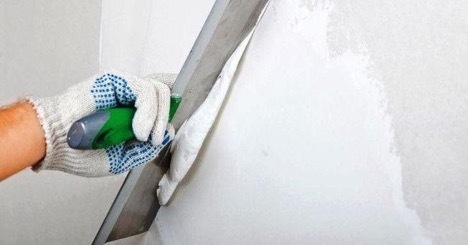
The content of the article
-
Selecting material for leveling
- Features of choosing gypsum putty
- Features of choosing plaster
- Features of choosing drywall
- Features of choosing a self-leveling mixture
- Alternative solutions
- Wall leveling technology
- Doing the work yourself
- Finishing work
- Mistakes when leveling walls and how to avoid them
- How to avoid mistakes when leveling walls
Selecting material for leveling
When deciding how to line the walls with wallpaper, you should focus on the degree and nature of surface defects. For minor unevenness, finishing putty is suitable. If the walls have significant differences, then you cannot do without using starting putty or plaster.
Various materials are used in the work:
- Gypsum putty for dry rooms, cement putty for wet ones.
- Plaster that can effectively eliminate deep unevenness.
- Drywall is an ideal material for radically leveling walls with large defects.
- Self-leveling mixtures for preparing floors for coverings; they can also be used on walls.
Features of choosing gypsum putty
When choosing gypsum putty for leveling walls under wallpaper, you should take its properties into account. Gypsum putties are characterized by rapid hardening and excellent adhesion to mineral substrates. They provide a smooth and even surface, which is a necessary condition for further wallpapering. However, these compositions are not suitable for damp rooms and places with high temperature ranges. It is also important to choose a putty taking into account its drying time, so that it matches the pace of the work being carried out.
Features of choosing plaster
Plaster for leveling walls must correspond to the specifics of the room and the expected load on the walls. Cement-sand mortars are preferred for wet rooms and facades due to their moisture resistance and strength. Gypsum plaster is used for interior work; it has good vapor permeability and ductility. You should pay attention to such parameters as drying time, shrinkage, level of adhesion to the base and resistance to cracking.
Features of choosing drywall
When choosing plasterboard for leveling walls, it is important to decide on the type of sheets. Standard sheets are suitable for dry areas, while moisture-resistant options are recommended for kitchens and bathrooms. Fireproof plasterboard provides additional safety due to its resistance to high temperatures. It is also important to consider the thickness of the sheets - the thicker it is, the stronger the structure will be, but also the heavier the frame structure.
Features of choosing a self-leveling mixture
Self-leveling mixtures are used to create a perfectly level floor surface before laying the topcoat. When choosing such a material, it is important to consider the maximum layer thickness recommended by the manufacturer, as well as the drying time. When choosing a mixture, pay attention to its strength characteristics and whether it is suitable for use with heated floors. Mixtures with polymer additives have improved adhesion and elasticity, which prevents the appearance of cracks during shrinkage.
Alternative solutions
In addition to standard material options for leveling walls under wallpaper, such as plaster, putty, drywall and self-leveling mixtures, there are less popular, but in some cases very effective solutions:
- Textile wallpaper - they can hide small unevenness in the wall and act as an additional leveling layer.
- Cork panels are an environmentally friendly material that can be used for leveling walls and has good heat and sound insulation properties.
- Expanded polystyrene sheets are often used in facade insulation systems, but can also be used indoors to level and improve the thermal insulation of walls.
- Liquid wallpaper is a mixture of cellulose and fibers that is applied to the wall and, after drying, forms an even coating.
- Polymer panels are a finishing material that can be used to quickly level walls if a high degree of evenness is not required.
- Reinforcing mesh followed by application of thin-layer plaster allows you to strengthen the wall and partially hide unevenness.
- Magnesite board is a new finishing material, similar to plasterboard, but with improved strength and moisture resistance.
- Bamboo wallpaper or panels - they can be used to give the interior an original look and also partially line the walls.
- Mineral and acrylic paints - some of them can be applied in a thick layer and partially level the surfaces.
The choice of less popular materials depends on the specifics of the room, the desired final effect and budget. It is always worth assessing how well such a material meets the requirements for humidity, strength, environmental friendliness and durability of the finish.
Wall leveling technology
This technique requires precision and attention to detail. After selecting the material, it is applied in accordance with technical instructions. It is important to ensure uniform distribution of putty or plaster over the wall surface.
Preparation of tools and materials for work:
- primer to improve adhesion;
- putty knife;
- rule;
- level;
- mixer for mixing solutions;
- various mixtures for leveling.
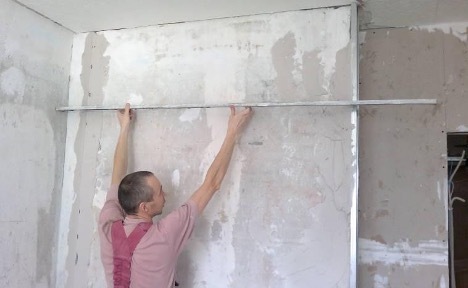
Doing the work yourself
This is a doable task, but it requires preparation and patience. The process begins with priming the walls to increase adhesion. Then the plaster or putty is applied in layers, following the drying technology of each layer.
The puttying process takes place in several stages:
- Applying starting putty to fill large defects.
- Sanding after the first layer has dried.
- Applying finishing putty to create a perfectly smooth surface.
- Final sanding before wallpapering.
Finishing work
After the walls are leveled and completely dried, the surface must be thoroughly sanded. This will ensure perfect smoothness, which is key to achieving a high-quality result when wallpapering. Before you start wallpapering, the walls should be treated with a primer, which will ensure additional adhesion of the wallpaper to the wall.
Mistakes when leveling walls and how to avoid them
In the process of leveling walls for wallpaper, certain problems often arise that can affect the quality of the final result. Avoid the following common mistakes:
- Neglecting to clean and prime the surface can lead to poor adhesion of materials and peeling of the coating.
- Using the wrong leveling material can lead to additional problems such as cracks or unevenness.
- Uneven or insufficient application of the material can lead to unevenness on the wall surface, which will complicate subsequent finishing.
How to avoid mistakes when leveling walls
To avoid problems when leveling walls for wallpaper, you should follow a few simple rules:
- Thoroughly clean the wall surface before starting work.
- Assess the condition of the walls and choose a material that will effectively cope with existing defects.
- Follow the application instructions for the selected material, ensuring even and thorough coverage of the wall.
By following these recommendations, you can avoid common mistakes, ensuring high-quality wall alignment and an ideal basis for subsequent finishing.
Leveling walls before wallpapering requires attention to detail and precision, but the results are well worth the effort, ensuring the durability and aesthetics of the wallpaper.
